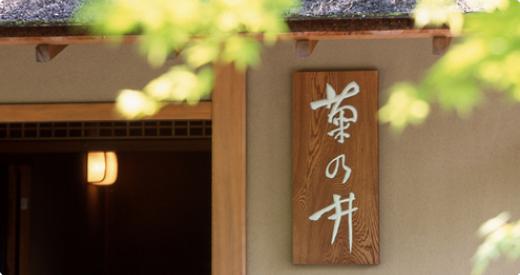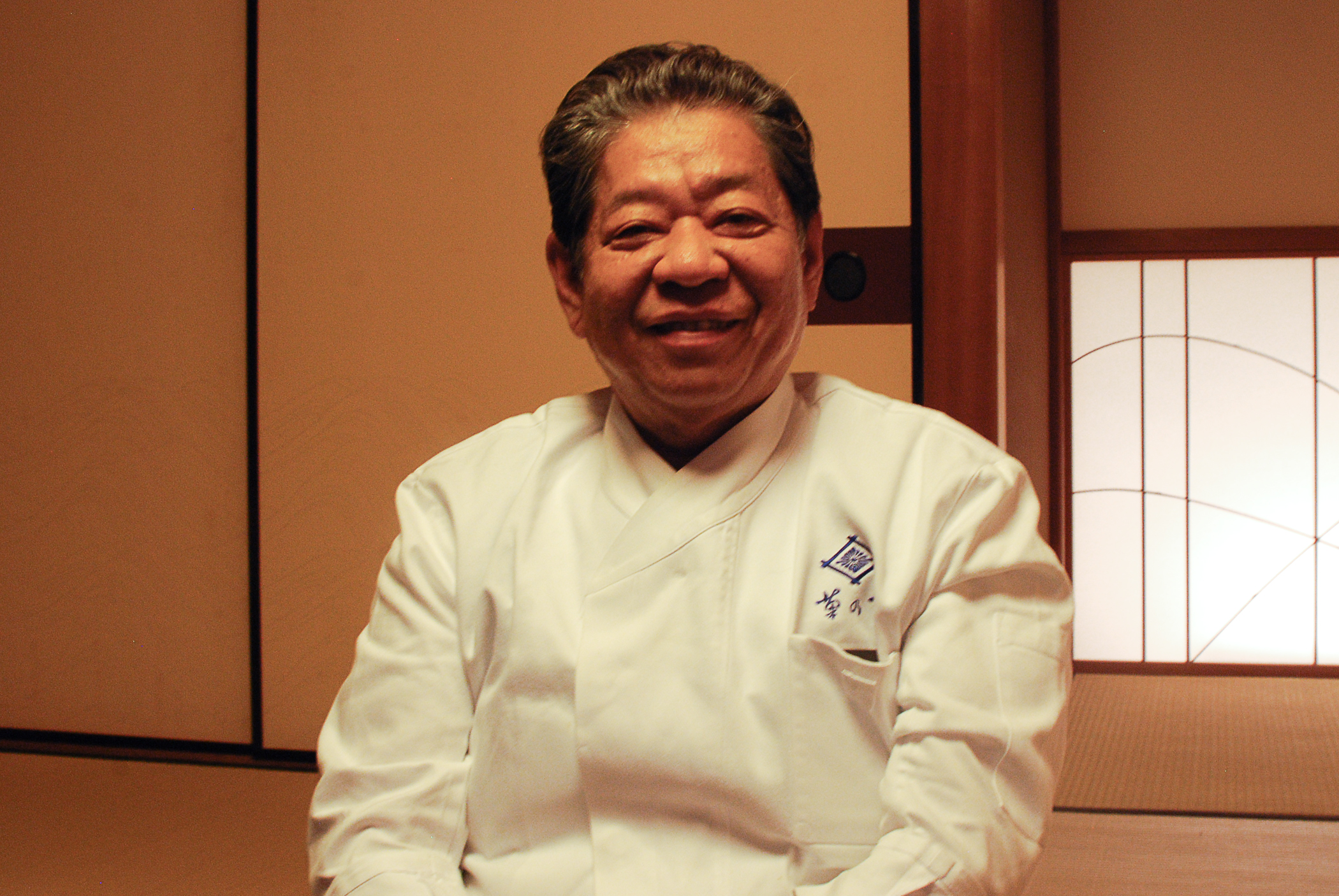Interview with Chef Murata of Kikunoi

“Kuriya Sen,” says Yoshihiro Murata. At a low table in the tatami-mat tea room, he writes two kanji characters 厨仙 and then looks up expectantly, rather pleased with the clever pun. He smiles. Murata, one of Japan’s most highly revered and accomplished chefs, is explaining the name of his new restaurant which will open in London later this year. Chrysan is short for chrysanthemum and is a reference to Kikunoi, the century-old ryotei restaurant in Kyoto which Murata succeeded as third generation owner and chef. Long before earning its three Michelin stars, Kikunoi had already built a reputation legendary among gourmands all over the world. Unlike the exquisite kaiseki cuisine for which Kikunoi is renowned, however, Chrysan will serve what he called “simple food”—or obanzai home cooking of Kyoto. The name also sounds like the term 厨仙 which means “kitchen immortal.”
While Murata takes a certain pride in the history of Kikunoi and remains firmly rooted to the tradition of kaiseki, this was not always the case. In his early twenties, he left Kyoto to learn French cuisine in Paris–only after to have a change of heart and returned alongside his father at Kikunoi. Since then, Murata’s culinary style exemplifies tradition but is also dynamic, creative and evolving with every season.
“Tradition is born of innovation,” says Murata. Kikunoi is different now than during the time of Murata’s father and will continue in the tradition to take steps forward and evolve. “This year it is different from before, and will be different in every year after.”
Modern kaiseki at Kikunoi is a mix of four categories of cuisine: imperial palace cuisine, tea ceremony tradition, vegetarian temple food, and obanzai. Each dish is a meditation on nature and the seasons. Currently, Murata is inspired by “the fragrance of the spring sea.” The food will take on all of the colours, aromas and aesthetics of the hina matsuri festival.
Murata’s style has influenced renowned chefs throughout the world—notably Ferran Adria, Nobu Matsuhisa, and René Redzepi. Adria who is best known for molecular gastronomy is a good friend and frequently visits Murata in Kyoto. The two chefs would drive down to Nishiki market and explore some of the local products. All of the vegetables served at Kikunoi are grown locally and fresh fish brought in at 4 a.m. from Akashi. Murata strives for innovation but has little interest in radical change, fusion cuisine or molecular gastronomy. He admits that such experimentation may create food that is interesting but is not necessarily nourishing or even tasty. “[Molecular gastronomy] is done,” says Murata. “The question is: do you think such food is tasty?”
Yet, Murata does approach culinary techniques with a certain scientific precision. Off the top of his head, he could rattle off the water temperatures and mineral content of spring water from different areas such as Evian and Volvic. The name Kikunoi literally means “chrysanthemum in the well” referring to the local well which spring water has been used in cooking for generations. Water is an essential concern because kombu seaweed will not produce good dashi broth when the water conditions are not ideal. Murata even ships water from this well in Kyoto to his restaurant in Tokyo to make dashi.
Dashi is the cornerstone of kaiseki and Japanese cuisine imparting a savouriness known as umami. There are many different kinds of umami that combine to create real complexity of flavour, Murata explains: “When you add kombu which has glutamic acid to bonito which has inosinic acid, then 1+1=8. Add the guanylate from dried shiitake mushrooms and then 1+1+1=16.”
People learn to enjoy umami as babies from breast milk which is high in glutamates, according to Murata. Hence, it imprints a feeling of satisfaction, comfort and happiness. He believes that other cuisines are emulating the way the Japanese use umami over fats or oils in the cuisine.
From the culinary experience at Kikunoi so steeped in tradition, one would scarcely guess that its chef would be quite so focused on amino acids, minerals, and calories. However, it demonstrates how even one of the culinary world’s oldest and deepest traditions is actually a process of reinvention.

Chef Yoshihiro Murata









